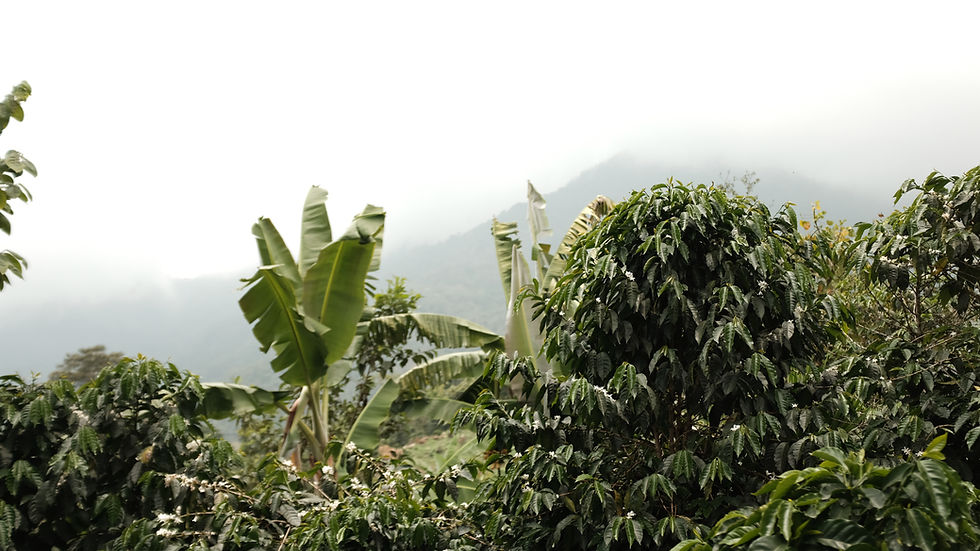GRAPOS
- Nader Sarabadani
- Sep 19, 2024
- 2 min read
FLAVOUR PROFILE: Chocolate Brownie, Spices, Caramel
LOCATION: El Porvenir and Llano Grande, Chipas
ALTITUDE:1500
VARIETAL: Típica, Marsellesa, Bourbon
PROCESS: Washed

Representing roughly 2% of global coffee production, Mexico is well-known for its coffee grown intheChiapas and Oaxacan regions situated in the southern reaches of the country. Coffee first arrived in Mexicowith the Spanish colonists in the 18thcentury. After independence from Spain, the country, although in turmoil,began to slowly cultivate coffee plantations in the southern states. Border disputes with Guatemala ensuedas Europeans bought up large swathes of land, pushing indigenous populations into the mountains.The Mexican Revolution led to Agrarian Reforms redistributing land to local populations. Small-scale coffeeproduction exploded with the creation of the National Coffee Institute of Mexico (INMECAFE) in 1973 yetwas dismantled in 1989 following the International Coffee Crisis. With the lack of support from a governingcoffee body, producers were then forced to sell coffee at low prices to local coyotes. Thanks to the creationof cooperatives and other producer organizations, producers received more support and were providedwith better access to international markets. Today, coffee production has stabilized and remained strong.This lot is one example of how Mexican coffee has prospered.Chiapas is situated in the southern reaches of Mexico, with rich biodiversity and climbing altitudes–thisregion is known for its healthy soils andideal climates for coffee production.As one of the five Mayan Statesin Mexico, Chiapas has a wealth of archaeological andcultural history.It is within this region that theGrupode Agricultores PositivosS.P.R. (GRAPOS)was foundedin 2007.Throughout the Chiapas region,specificallyin the El Porvenir and Llano Grandemunicipalities, arecollections of smallholder coffee producers growing coffeein the richupper reaches of the mountains. TheGRAPOS organizationwas initially comprised of 90 producers, growing to 300 the following year,andexpanded to the 2,708 producers involved today,772 ofwhichare females.El Porvenir translates to mean ‘the future,’ which isevident in its high altitudes, rich biodiversity, and potentialto create a harmonious future with high quality coffee production and ecosystem preservation.The areaalso borders theTriunfo Biosphere Reserve,which explains the biodiverse array ofnative flora and faunainthe area.GRAPOS seeks to provide each of theseproducers with the necessary guidance to produce high qualitycoffee.This comes in the form of technical assistance, free seedlings to replace damaged trees, in additionto other educational programs.

There are 8 collectioncentresthroughout the area to make it easier for producers to deliver their cherries tothe milllocated inAngel Díaz, Honduras, Llano Grande, Porvenir, Vega del Rosario, Tapachula, Guatimoc,and Chicomuselo.The producers live in remote farms, making communication and travel quite difficult–soGRAPOS provides the necessary assistanceto the producers, making it easier to deliver and sell cherries.Thanks to the organization’s involvement, these producers have seen an increase in yields and quality,thusleading to an increase in overall income. This then allows more funds to be invested in the farms and createsa future for coffee production in this region.After the producers pick and deliver the coffee cherries, they are sorted for quality and pulped to removethe exterior skin. Once clean, the coffee is then fermentedfor 24 hours to breakdown the external mucilage.After fermentation is complete, the beans are washed and spread evenlyon cement patios to dry in theopen sun until the ideal moisture contentis reached.


Comments